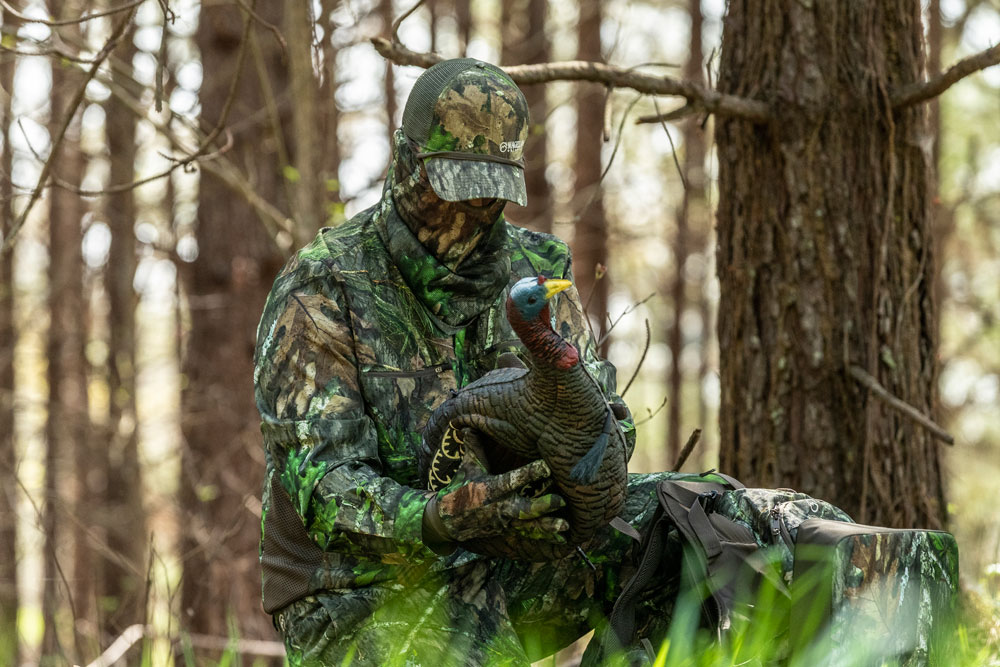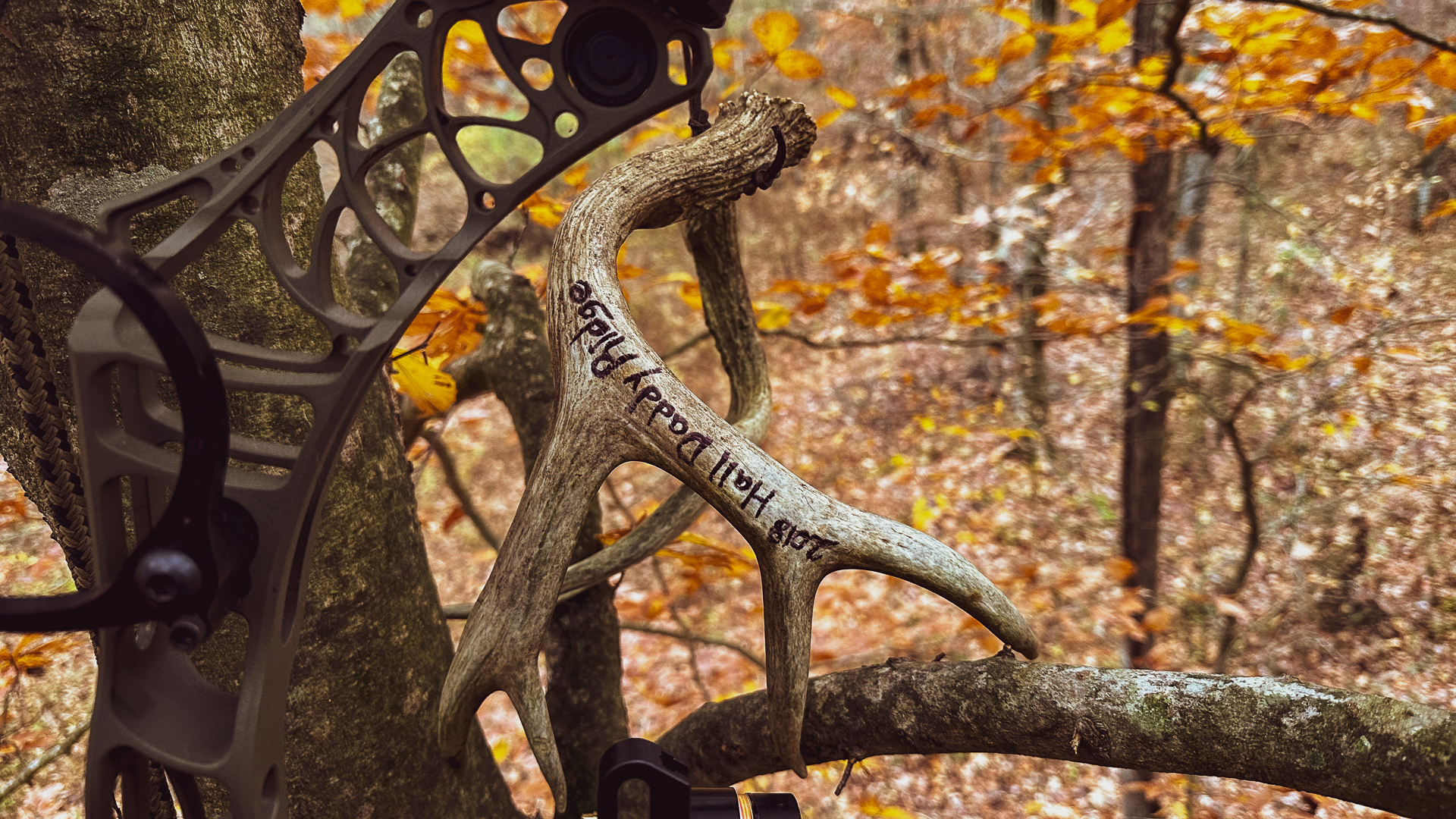A summary of essentials and non-essentials for your turkey vest.
Bob Humphrey

Among fishermen it’s debatable, but on the hunting side, turkey hunters are the clear winner when it comes to the number and variety of gear and gadgets taken afield. Some items are essential, others not so much, but the turkey hunter’s motto is: It is better to have and not need than need and not have. What follows is a list of both the necessary and optional items you might want to tote on your next turkey hunt.
Variety of Turkey Calls
The basic premise of spring turkey hunting is to call a gobbler into range; so you obviously need some turkey calls. The long, narrow pocket on the front of your vest is designed and intended for a box call. Some vests and some hunters carry a couple, perhaps a basic box for all-around use and a larger boat paddle for long-distance calling, or a synthetic box for inclement weather.

Next comes a slate or pot call. Most vests have multiple pockets for them, or a single, divided pocket. It is always a good idea to have at least a couple because turkeys can be fickle and will react differently to different tones. I’m not sure about the turkeys, but to my ear, nothing rings truer than authentic slate. Still, other materials like plastic, glass and aluminum offer different and sometimes louder, higher-pitched tones, and they work when wet. You’ll obviously need strikers or pegs as well and again you should carry several. Wood is good, but carbon or other materials offer further variety and adaptability to the situation or conditions.
Diaphragms or mouth calls will fit in most any pocket of your vest or shirt and if you can use them, you should carry them. For reasons already cited, more is better. I usually carry at least three, sometimes more. This adds variety and ensures I’ll have at least one if I accidentally leave some in the wrong pants or shirt when I change wardrobe.

There are a few more calls you might want to tote. One is a gobbler tube. As with decoys, jealousy is often a stronger emotion than lust, and a few well-timed gobbles can sometimes turn the tide on a hung-up bird. Locator calls are also handy to try and strike a bird if you can’t mimic a crow or an owl by mouth. Yes, you can use a turkey call but then you’ve thrown down the gauntlet and a responsive bird may be on the way before you’re ready.
Turkey Decoys
While not necessary, decoys can be extremely helpful, and there are plenty of options. Full-body, realistic decoys are quite popular nowadays but are heavy and bulky, which might lead you to leave them behind on short or run-and-gun hunts. 3-D foam decoys are lighter and collapsible, and 2-D silhouettes lighter still. And don’t forget the stakes. Along similar lines, I carry a turkey wing to simulate a fly-down, but you can also use your hat.

Turkey Call Care
Your calls may need care and maintenance over the course of the season, or even a hunt. A basic call care kit consists of a small square of sandpaper and another of Scotchbrite for conditioning slate calls and chalk for tuning up your box call. Other items may need attention from time to time as well. You can use a multi-tool to adjust the screw on your box call, tighten or change choke tubes, pull stuck shells from your action or whittle a decoy stake if you forget or break one. While not necessary, a pair of ratchet snippers can be quite handy for clearing shooting lanes or setting up a quick, makeshift brush blind.
On a somewhat related note, you might want something to take care of the bugs. That something is a ThermaCell. It will keep the bugs at bay so you won’t be swatting and scratching when you need to be motionless. And don’t forget extra pads and canisters. You may find a bag of wet wipes will come in handy for personal care as well.
Lights, Camera
As most turkey hunting days begin long before dawn, you need a flashlight. I carry two in case one dies, and prefer the lithium battery type, because one the size of a good cigar will shine like a spotlight in the dark. If you don’t have a spare, bring back-up batteries as lights have a tendency to fail at the most inopportune time. Headlamps are also helpful in freeing up your hands to hold your gun and fend off brush.
Most everyone carries a smart phone now and more recent vests even have a separate pocket for them. It gives you a camera to record memories of the hunt, a GPS and satellite imagery capabilities. It has a light in case your flashlight fails and where legal, you can even play turkey calls on it if you’re not proficient with the real things.
Another item that should be considered an absolute necessity, and is nearly the same size and weight as a pack of mouth calls, is a compass. Never go in the woods without one, even if it’s an area you’re intimately familiar with. If you question your compass, compare it to your spare, which also a good idea to have.

Other Items
There’s a few other items that are absolutely necessary but sometimes forgotten. One is your hunting license, and make sure it’s in a zip or snap pocket, and maybe even inside a watertight container. You might want a pen or pencil as well if they are required for filling out tags upon harvest. Last but not least are a mask and gloves. I strongly suggest you carry extra of both. Even if you remember yours, odds are good your hunting partner might not.
Conclusion
That about covers it, at least for the important stuff. By season’s end there’s usually a half pound or so of leaves, twigs, duff and hopefully turkey feathers that needs to be cleaned out, along with a few empty wrappers from bite-size Snickers bars and maybe a couple uneaten ones that are now thin as a nickel and hard as a rock. Oh, did you remember shotshells?
Bob Humphrey is a certified wildlife biologist, registered Maine guide and award-winning outdoor writer and photographer.































